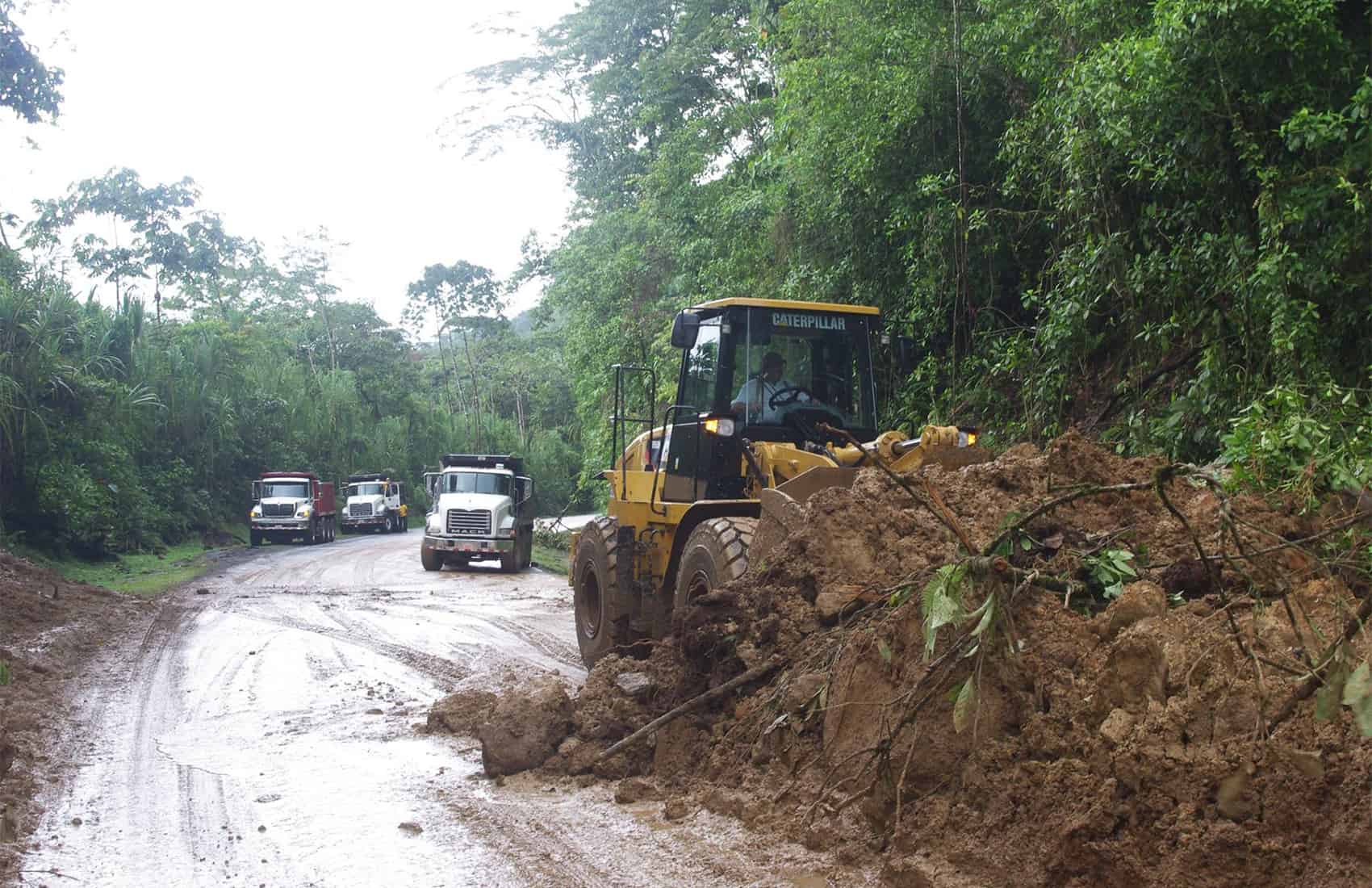The mountainous Route 32 to the Caribbean coast reopened over the weekend to normal traffic following an unprecedented natural disaster involving at least 40 landslides that trapped thousands of motorists for eight hours last Thursday night and Friday morning. Miraculously, no one was seriously injured.
More than 100 trees fell on different parts of the highway, the country’s main route from the capital to the Caribbean port city of Limón.
National Roadway Council (CONAVI) Roads and Bridges Manager Edgar May Cantillano on Monday confirmed the route is open, but he warned that workers continue to clear debris. CONAVI allocated ₡40 million ($75,000) from the roadway maintenance budget to clear the route, May said.
A Public Works and Transport Ministry (MOPT) report indicates that landslides on a stretch of the highway in the Braulio Carrillo National Park blocked 350 vehicles, including buses, semi-trailers and two ambulances, stranding 2,500 people.
Red Cross officials, who assisted 1,200 motorists during the ordeal, reported no serious injuries. In the past five days, the Red Cross has mobilized personnel from the provinces of Heredia, Limón and San José and opened two temporary response stations to provide assistance to those affected by continued rains, low temperatures and foggy conditions in the mountainous areas of the Braulio Carrillo National Park.
Guillermo Loría Salazar, transport program coordinator at the University of Costa Rica’s National Structural Materials and Models Laboratory (LANAMME), said that “until the country has a permanent solution to landslide problems on Route 32 during the rainy season [May-November], MOPT should not allow motorists to be in danger; they should close the road whenever rainfall levels reach a certain point considered dangerous or prone to causing mudslides.”
LANAMME experts in the past have proposed adding a better drainage system in the area and building shallow tunnels to divert falling debris. That method, known as cut-and-cover, involves a trench that is excavated and roofed with an overhead support system strong enough to carry and divert a load above the tunnel.
MOPT engineers this week will conduct evaluations at several points along the route. Unstable soil conditions are likely to continue, however, due to water saturation caused by persistent showers.
The National Meteorological Institute has forecast continued rains in the area throughout the week. Meteorologist Gabriela Chinchilla on Monday said the forecast for Braulio Carrillo National Park is cloudy conditions in the mornings and intermittent heavy showers and thunderstorms in the afternoons. The number of showers is expected to increase on Wednesday, she said.
“Heavy rains and saturated soil will cause water accumulation of 30-50 millimeters, so we recommend motorists to be alert and remain cautious when driving through that area,” Chinchilla said.







